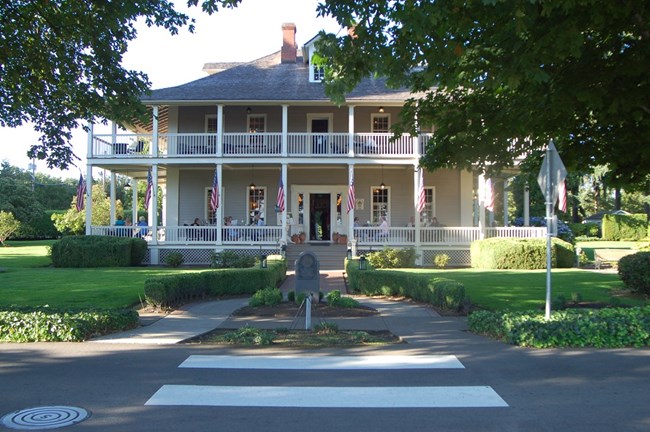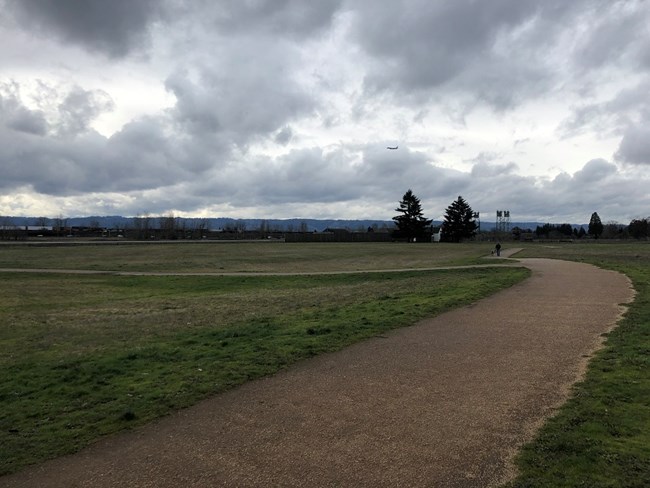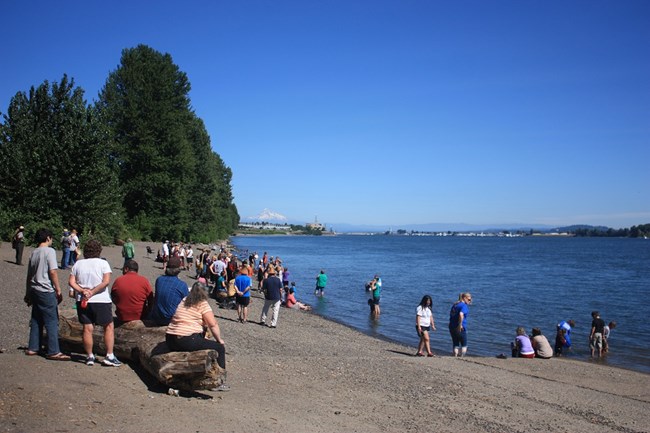Last updated: May 13, 2024
Thing to Do
Level 1 Trails at Fort Vancouver National Historic Site

Here, you can find information on Level 1 walking trails at Fort Vancouver National Historic Site. Level 1 trails are wheelchair-accessible and can be walked in 15 minutes with minimal elevation change.
Officers' Row and the Columbia River Waterfront Park are accessible by C-Tran.
Officers' Row and the Columbia River Waterfront Park are accessible by C-Tran.
Download a map of these Level 1 trail routes here
Level 1 Trails Basic Information
| Trail Name | Trail length (round-trip miles) | Walking time (in minutes) | Changes in elevation (feet) | Trail is wheelchair accessible | Trail accessed by C-Tran | Trail has benches |
| Officers Row | 0.2-0.8 | 0-30 | No | Yes | Yes (32, 25) | Yes |
| Spruce Mill Trail | 0.5-0.6 | 15-20 | No | Yes | No | No |
| Columbia River Waterfront | 0.2-1.2 | 0-40 | No | Yes | Yes (3A, 3B) | Yes |
Trail Descriptions
Details
Duration
0-40 Minutes
Activity
Hiking
Age(s)
All ages.
Pets Allowed
Yes
Pets must be on a leash no longer than 6 feet at all times. Please pick up and dispose of pet waste. Learn more about bringing pets to Fort Vancouver here.
Activity Fee
No
Entrance fees may apply, see Fees & Passes information.
Location
Fort Vancouver National Historic Site
Reservations
No
Season
Year Round
Time of Day
Day, Dawn, Dusk
Trails are open from dawn to dusk.
Accessibility Information
Level 1 trails are wheelchair accessible. Access to the Columbia River waterfront/beach area is not wheelchair accessible.

City of Vancouver
Officers' Row
The 22 fully restored, stately homes lining the Vancouver Barracks Parade Ground were built for the Army officers who served at this historic post. Each building has a unique history. The Grant House served as the home of the post commanders and is now a restaurant. The Marshall House is named after General George C. Marshall, who served as commander of Vancouver Barracks from 1936 to 1938.
On this walk, stroll down this beautiful tree-lined boulevard and look across the historic Vancouver Barracks Parade Ground. Here, you can see the reconstructed garrison flagpole and bandstand, which were centers of military and community celebrations in the 19th and 20th centuries.

NPS Photo
Spruce Mill Trail
This trail connects Pearson Air Museum to the reconstructed Fort Vancouver. During World War I, the US Army Signal Corps built and operated the world's largest aviation grade lumber mill on this site. Learn more about the Spruce Mill here.
This easy loop trail leads you across a meadow that was once the site of this massive Spruce Mill. It also offers an opportunity to watch planes take off at nearby Pearson Field, a municipal airport, and to imagine this place before the arrival of the Hudson's Bay Company, when it was a prairie used by Indigenous peoples in the region as a trading crossroads, hunting area, and place to gather camas roots. On the western edge of the loop, near Fort Vancouver, the trail provides easy access to the Fort Vancouver garden, where you can see flowers and crops that were historically grown at the Hudson's Bay Company fort.

NPS Photo
Columbia River Waterfront
Throughout the history of the Northwest, the Columbia River has been a vital avenue of transportation and communication. The Hudson's Bay Company used the river to travel between the Company's many forts in the region.
Get a glimpse of the mighty Columbia River on this peaceful, shady walk. At Waterfront Park, you can access a beach along the river.
